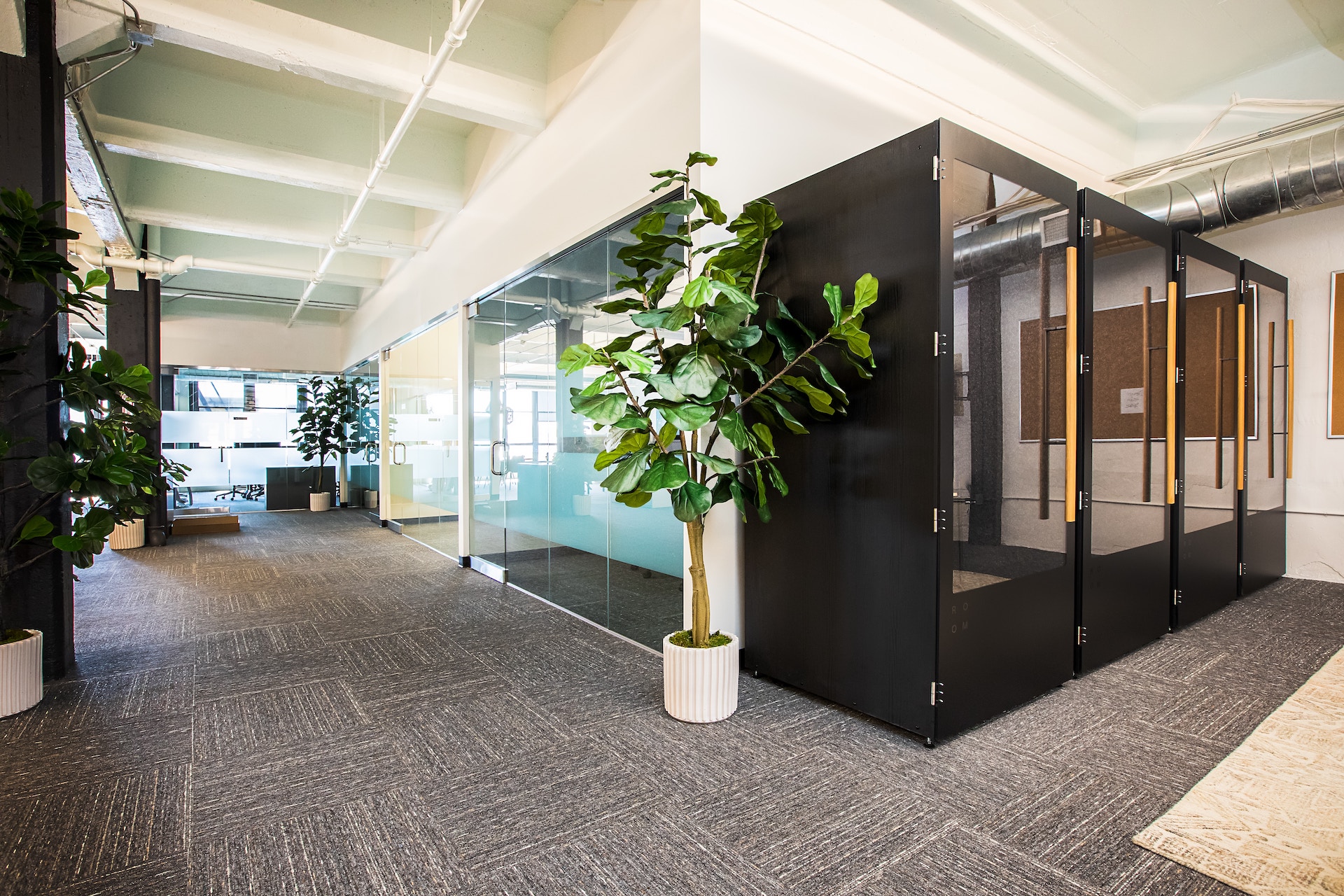Smart buildings provide many advantages to businesses, people, and the environment. It’s no longer a question of “if” a smart building makes sense — smart buildings aren’t indulgences but instead represent a concrete, important commitment to creating a more people- and planet-friendly environment to live, work, and interact with others.
Smart technology can transform commercial buildings in amazing ways by:
- Using autonomous or highly connected systems to support user-focused, efficient operations
- Enabling sensor-based data collection, analysis, and intelligent real-time reporting
- Making it possible for building systems to self-diagnose and self-correct with little human oversight
Smart buildings can collect, analyze, and use data to create a personalized workplace, from identifying optimal workspaces or helping employees quickly locate colleagues to adjusting environmental conditions to optimize air quality, CO2 levels, and temperature. Those who’ve evaluated the ROI of smart buildings have concluded that effective smart buildings:
- Boost productivity
- Contribute positively to tenants’ wellbeing by supporting a more balanced work environment and lifestyle
- Utilize technology to connect tenants, operators, and services
- Provide an important piece in the puzzle of smart cities by reducing carbon footprints and dependence on resources like energy
- Reduce energy consumption because they’re greener and more efficient
- Integrate more seamlessly as cities become smarter
Becoming Smarter
A smart building needs more than just well-equipped conference rooms to classify as “smart.” Smart buildings incorporate a variety of Internet of Things (IoT) solutions and technologies like M2M, Edge Computing, intelligent Building Management Systems (iBMS), and intelligent data analytics that automate controls, security systems, entry/access, lighting, and HVAC systems.
More simply, think of smart buildings as ecosystems – dynamic environments that utilize technology and sensors to enable systems to monitor and talk to each other, making adjustments as needed.
Smart buildings offer a long-term approach to accommodating specialized needs. An office park might want smart buildings that can automatically adjust environmental controls to reduce overnight operational costs. Manufacturing facilities may have specific HVAC or lighting requirements.
Smart buildings make it easier to create more flexible, adaptable, and manageable spaces. Sensors in many-floored buildings can identify greater demand for elevators — and recommend alternatives during peak usage. Elevators can even predict floor destinations based on past behavior.
The IoT enables connectivity among all devices within a building; these devices can monitor, predict, course-correct, and control the building’s behavior. Working together, big data and cloud computing leverage smart algorithms and big data analytics to convert huge data streams into actionable information.
Using IoT facilitates 100% transparency. Building operations can see exactly which resources are used — and how. Facility managers know what’s happening across a building’s footprint and can make adjustments for the most efficient optimization. Mobile apps that allow monitoring from any smart device add another layer of ease in monitoring and managing systems quickly, flexibly, and easily.
Experts predict that as IoT products continue evolving, companies who provide services and products to the smart building market will continue to partner with manufacturers and hardware/software vendors to develop customized solutions that fit diverse needs in all verticals.
Increasing and Supporting Employee Productivity
The environment a smart building can create has a definite impact on employees. Smart technology can enhance the wellbeing of a building’s personnel.
- Smart lighting systems can automatically adjust colors and brightness to imitate sunlight and synch with occupants’ circadian rhythms.
- Soaring and sinking temperatures can make people feel tired; but connected sensors, ventilation and temperature control systems can monitor individual rooms for occupancy levels, air quality, and temperature and adjust accordingly.
Connected workspaces successfully bridge the gap between IT and the business. Cohesive, worker-centric layouts that include open floorplans, huddle rooms and other meeting spaces, and the technology to support full, effective collaboration can simultaneously create (and monitor and optimize) environments that support employees’ wellbeing.
An 2014 PwC study predicted by 2020, employees will bring more than 75 million wearables into the workplace. Smart buildings can incorporate these devices into monitoring employees’ health or even identify potential health problems (with the proper access, policies, and approvals to protect individuals’ privacy and rights).
Some buildings and employers already collect data to identify individual preferences and needs to more quickly resolve issues or provide important resources. Smart building sensors can identify the ways in which employees use desks, meeting rooms, and common areas. Employees can use apps to find colleagues, book workspaces, and more.
Challenges That Face Smart Buildings
With the addition and dependence on more technology to make buildings smarter comes a concern about data security, cyber security, privacy, and user acceptance. Because smart buildings carry significant expense, technology installations must be both scalable and updatable to meet the evolving needs of users and to be able to adapt to constant technological evolution. These are significant considerations to consider when approaching whether (and how) to design or update a smart building.
The key to designing a smart building is focusing on what people need for productivity and successful use. Smart vending machines are fun — but how much do they improve or enhance the environment or the building’s sustainability? Analyzing how connectivity improves productivity, engagement, and wellbeing — while improving performance at the organizational level — makes sense.
Finding the Right Commercial Smart Building for Your Needs
Smart buildings require thoughtful planning and strategy to yield the best ROI. From commercial real estate company NAI Hanson to Redwoods Design Studio and the IT firm Teknalysis Corp., the members of CREA United can help find and update the perfect smart building for their clients’ requirements.

